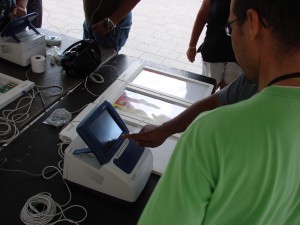Some of the most commonly found barriers to the implementation of technological solutions for election management are related to the legal framework of electoral processes.
As a rule of thumb we could consider that the closer electoral technology is to the actual voting experience of the voter, the bigger the amendments needed in terms of rules and regulations. For example, adopting a technological tool to monitor the installation of polling stations requires little changes to a country’s legal framework. However, migrating from manual to electronic voting, or adopting a data biometric solution to authenticate the voter and grant him access to the polling station, is a completely different story.
In spite of obvious differences among the nations of the globe (religion, languages, geographies, cultures, etc.), there is a set of minimum legal standards that any democratic elections must incorporate, in order to introduce automation and guarantee the successful management of elections.

These standards have evolved through time and are the result of the gradual progression of democracy around the world. The primary sources of the standards are: The Universal Declaration of Human Rights; the 1966 International Covenant on Civil and Political Rights; the 1948 American Declaration of the Rights and Duties of Man; the 1969 American Convention on Human Rights; the 1981 African Charter on Human and People’s Rights; and the 2001 Inter-American Democratic Charter.
According to the Institute for Democracy and Electoral Assistance (IDEAS), a legal framework has to be unambiguous, understandable, and transparent. To ensure democratic elections, it needs to include:
• Qualification to register as a voter, together with any restrictions on such right, if any;
• Qualification for and restrictions on candidacy;
• Rules governing seat allocation;
• Qualification on terms of office;
• Methods of filling casual vacancies;
• Removal of mandates;
• The secrecy of the vote; and
• Election management.
Countries considering to implement technological solutions to the administration of elections need to carefully consider the implications of each one of the topics mentioned above.
As promoters of automated voting and related technologies, we believe it is a well worth to invest resources in the sake of greater transparency, security, and efficiency.